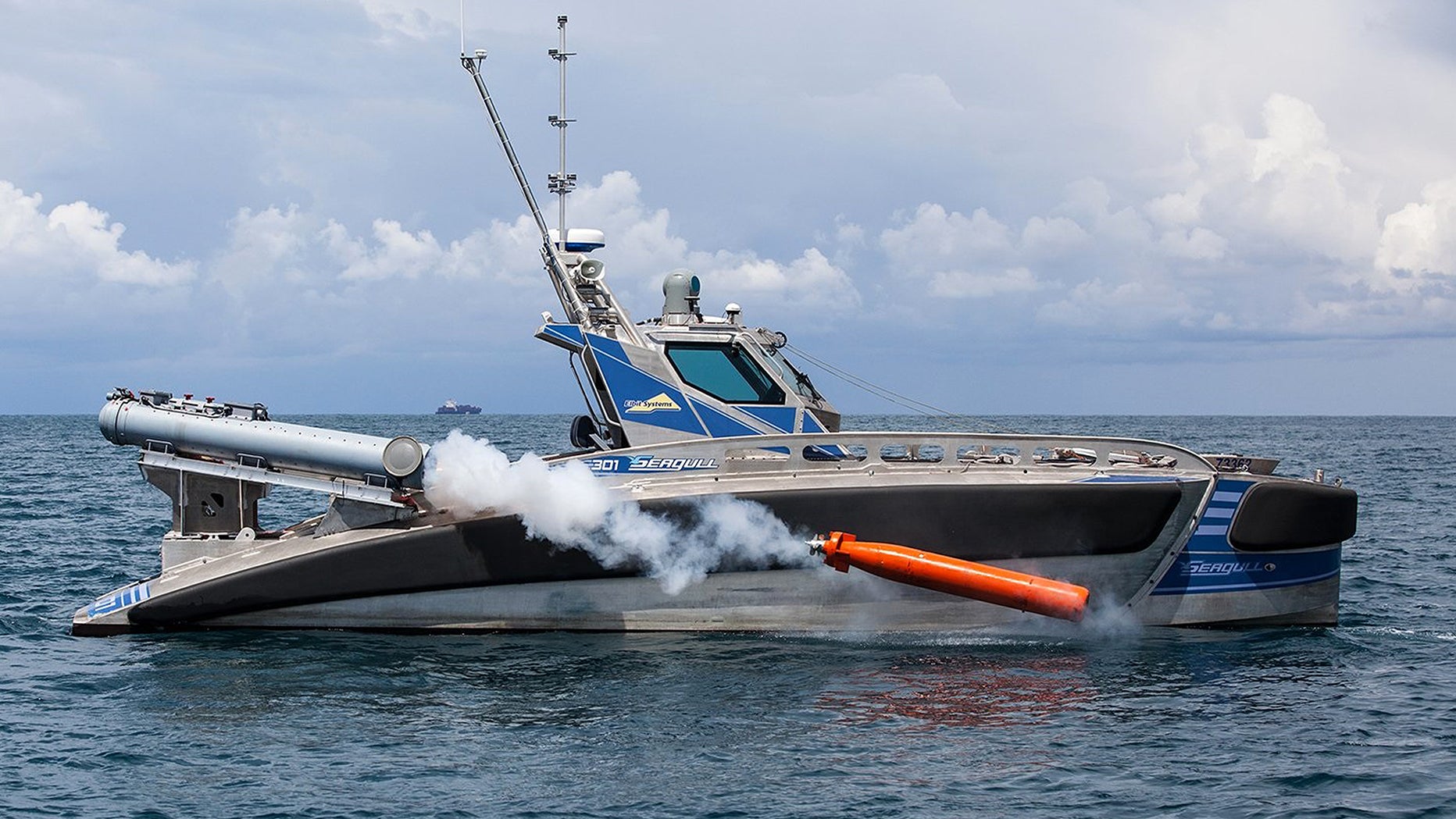Elbit Systems’ 12-meter experimental Unmanned Surface Vehicle (USV), dubbed Seagull, has been busy testing new capabilities and control concepts in recent months. The idea is that a small swarm of these craft—well, just two right now—can be controlled from a single workstation, deployed either ashore or on a ship. From there, tasks such as harbor patrol and force protection, mine detection, search and rescue and even anti-submarine warfare can be conducted with maximum efficiency.
The Seagull’s semi-autonomous control concept, long endurance (up to 96 hours of runtime), advanced sensor suite, and ease of adaptation could allow it to be a major force multiplier for navies in the not-so-distant future. The anti-submarine warfare mission is especially interesting as deploying a small swarm of these boats and ranging them over the horizon from their mothership or homeport could provide an inexpensive and thorough anti-submarine screen.
Historically, the problem with using a 12-meter boat for this mission is that even if it detects a submarine, another weapons platform has to prosecute that target. This could be an anti-submarine warfare helicopter or a maritime patrol aircraft, or even the mothership, by way of a rocket assisted torpedo. Still, this complicated “kill chain” takes time to assemble and weapons from other platforms take time to arrive on target. This is an especially critical issue when it comes to the cat-and-mouse game of submarine hunting.
Elbit seems to be looking at shortening that kill chain dramatically while still leveraging small boat efficiency. How? By installing a torpedo tube on the Seagull itself, giving it immediate engagement capability against subsurface contacts. This massive “gun” on a small boat even fits with the US Navy’s evolving “distributed lethality” concept, which contravenes the traditional idea that only centralized high-end surface combatants are capable of engaging large targets.

Elbit Systems
, Elbit System's SeagullAlthough this was just a fitment and launch test, Elbit could move toward combat system integration with this modular torpedo system. In other words, they could make the Seagull, when fitted with the right sensors, capable of providing a firing solution and engaging subsurface targets from the point of initial detection to kill. This would provide an “end-to-end” anti-submarine warfare solution in a very small and likely inexpensive unmanned package.
Fitting Seagull with a torpedo tube and an off-the-shelf torpedo is just another reminder of how semi-autonomous unmanned vehicles are moving from sensor platforms to actual shooting platforms. The unmanned surface vehicle space is also quickly evolving, from swarming small boats to DARPA’s ACTUV sub hunting autonomous drone ship that is has just now entered formal testing off the Southern California coast.
ACTUV, also known by its nickname “Sea Hunter,” is not envisioned as an armed weapon system. While finding and tracking submarines for weeks at a time is a niche capability very suited to the US Navy’s global strategy, for most navies, something like the Seagull, which can guard a port or a small flotilla of ships over medium ranges, is much more appealing. This is especially true when an semi-autonomous, desktop computer-like “point and click” interface can control multiple Seagulls at a single time.

Additionally, Seagull’s ability to be rapidly reconfigured for different missions, with various modular weapons and sensors available, as well as the capability to launch its own unmanned vehicles, presents a very enticing set of features for navies who can’t afforf to buy unique unmanned assets for every mission.
Keep an eye on the Seagull, it may just have wings.
Contact the author at tyler@thedrive.com
